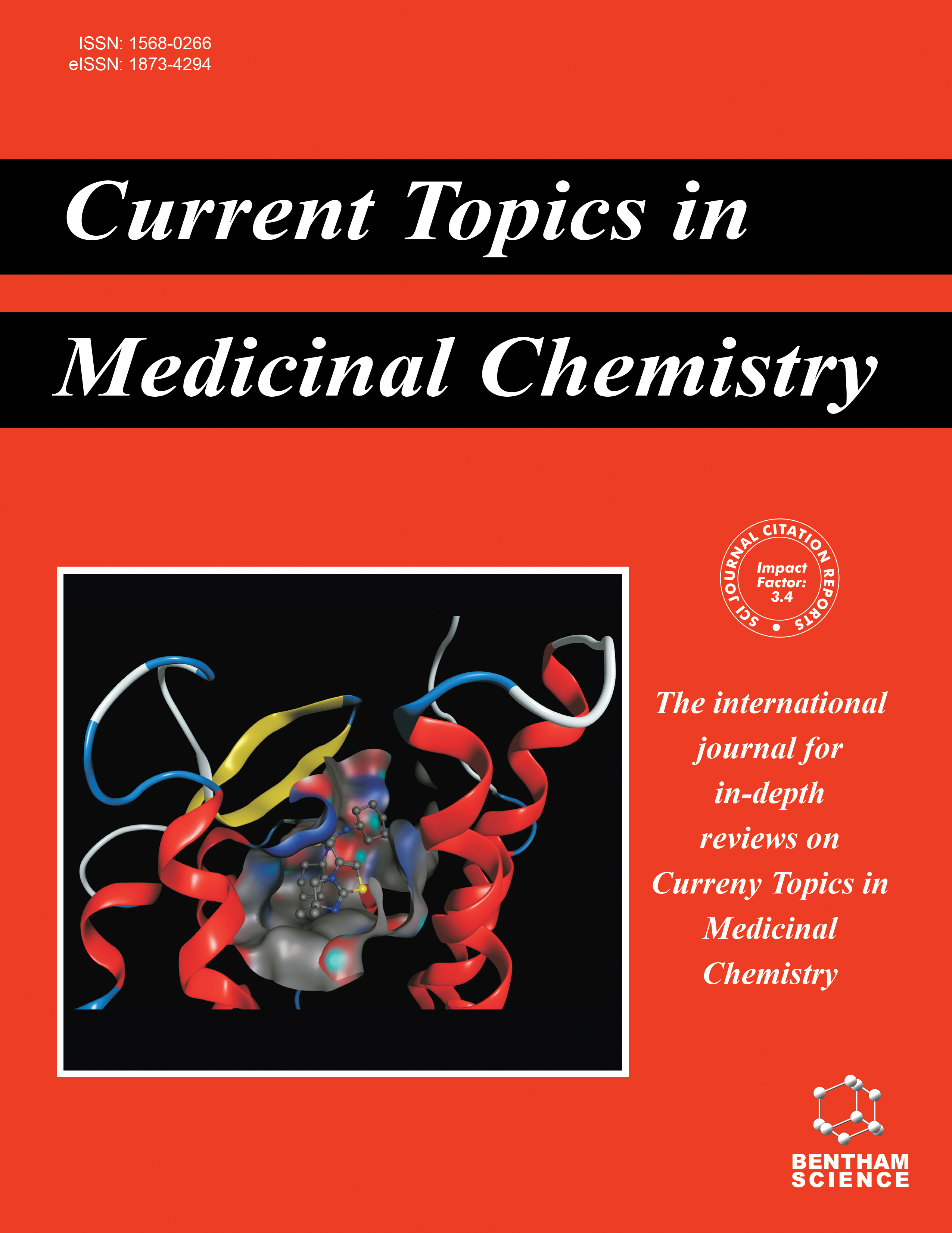- Home
- A-Z Publications
- Current Topics in Medicinal Chemistry
- Previous Issues
- Volume 24, Issue 3, 2024
Current Topics in Medicinal Chemistry - Volume 24, Issue 3, 2024
Volume 24, Issue 3, 2024
-
-
Role of Ubiquitin-specific Proteases in Hepatocellular Carcinoma Pathogenesis
More LessAuthors: Xinwen Zhang, Jiamin Jin, Jiacheng Cong, Siqi Chen, Ting Wang, Bin Gao, Guanlin Huang, Zhiqiang Huang, Juzheng Zhang, Zhenran Wang and Jinfeng YangSignaling pathways in hepatocellular carcinoma are primarily mediated by the phosphorylation and ubiquitination of post-translational proteins. In mammalian cells, ubiquitin-specific proteases (USPs) account for the majority of protein deubiquitination activities. In addition to transcriptional and post-translational regulation, ubiquitination plays an important role in the regulation of key proteins. There is a possibility that altered bio Read More
-
-
-
Pharmacological Effects of FTY720 and its Derivatives
More LessFTY720 is an analog of sphingosine-1-phosphate (S1P) derived from the ascomycete Cordyceps sinensis. As a new immunosuppressant, FTY720 is widely used to treat multiple sclerosis. FTY720 binds to the S1P receptor after phosphorylation, thereby exerting immunosuppressive effects. The nonphosphorylated form of FTY720 can induce cell apoptosis, enhance chemotherapy sensitivity, and inhibit tumor metastasis of multipl Read More
-
-
-
Cordia Dichotoma: A Comprehensive Review of its Phytoconstituents and Endophytic Fungal Metabolites and their Potential Anticancer Effects
More LessAuthors: Saurav M. Patil and Sankha BhattacharyaCordia Dichotoma is a valuable medicinal plant belonging to the family Boraginaceae. It consists of several beneficial secondary metabolite components, including alkaloids, carbohydrates, flavonoids, glycosides, saponins, and tannins. Numerous studies have been conducted to assess the anticancer properties of Cordia Dichotoma on MCF-7, A-549, PC3, and HeLa cancer cell lines, primarily utilizing ethanolic extract, me Read More
-
-
-
Improving ADMET Prediction Accuracy for Candidate Drugs: Factors to Consider in QSPR Modeling Approaches
More LessAuthors: Meilun Chen, Jie Yang, Chunhua Tang, Xiaoling Lu, Zheng Wei, Yijie Liu, Peng Yu and HuanHuan LiQuantitative Structure-Property Relationship (QSPR) employs mathematical and statistical methods to reveal quantitative correlations between the pharmacokinetics of compounds and their molecular structures, as well as their physical and chemical properties. QSPR models have been widely applied in the prediction of drug absorption, distribution, metabolism, excretion, and toxicity (ADMET). However, the accuracy of QSPR Read More
-
-
-
Current Status of Hedgehog Signaling Inhibitors
More LessAuthors: Xiaotang Wang, Tian Wang, Xiaona Song, Jiping Gao, Guoqiang Xu, Yunhui Ma and Guohua SongThe Hedgehog (Hh) signaling pathway plays a crucial role in diverse biological processes such as cell differentiation, proliferation, senescence, tumorigenesis, malignant transformation, and drug resistance. Aberrant Hh signaling, resulting from mutations and excessive activation, can contribute to the development of various diseases during different stages of biogenesis and development. Moreover, it has been linked t Read More
-
Volumes & issues
-
Volume 25 (2025)
-
Volume 24 (2024)
-
Volume 23 (2023)
-
Volume 22 (2022)
-
Volume 21 (2021)
-
Volume 20 (2020)
-
Volume 19 (2019)
-
Volume 18 (2018)
-
Volume 17 (2017)
-
Volume 16 (2016)
-
Volume 15 (2015)
-
Volume 14 (2014)
-
Volume 13 (2013)
-
Volume 12 (2012)
-
Volume 11 (2011)
-
Volume 10 (2010)
-
Volume 9 (2009)
-
Volume 8 (2008)
-
Volume 7 (2007)
-
Volume 6 (2006)
-
Volume 5 (2005)
-
Volume 4 (2004)
-
Volume 3 (2003)
-
Volume 2 (2002)
-
Volume 1 (2001)
Most Read This Month
Article
content/journals/ctmc
Journal
10
5
false
en


